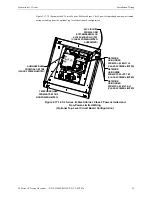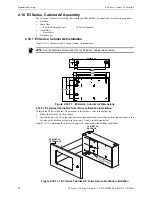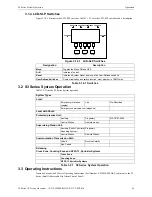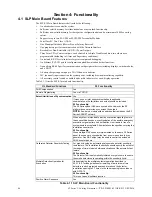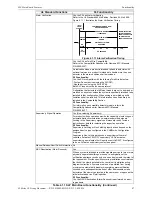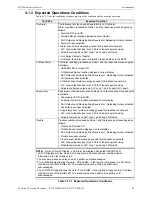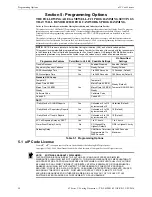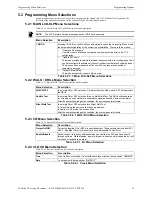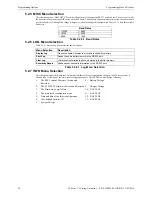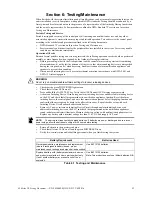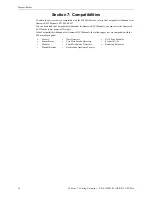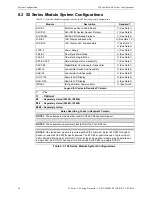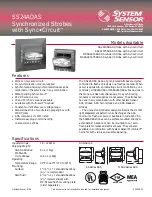
S3 Series UL Listing Document —
P/N LS10005-051GF-E:D3 3/09/2016
53
Section 6: Testing/Maintenance
When finished with the original installation and all modifications, conduct a complete operational test on the
entire installation to verify compliance with applicable NFPA standards. Testing should be conducted by a
factory-trained fire alarm technician in the presence of a representative of the Authority Having Jurisdiction
and the owner’s representative. Follow procedures outlined in NFPA Standard 72’s section on
Inspection,
Testing and Maintenance
.
Periodic Testing and Service
Periodic testing and servicing of the control panel, all initiating and notification devices, and any other
associated equipment is essential to ensure proper and reliable operation. Test and service the control panel
according to the schedules and procedures outlined in the following documents:
•
NFPA Standard 72’s section on
Inspection, Testing and Maintenance
.
•
Service manuals and instructions for the peripheral devices installed in the system. Correct any trouble
condition or malfunction immediately.
Operational Checks
Between formal periodic testing and servicing intervals, the following operation checks should be performed
monthly, or more frequently when required by the Authority Having Jurisdiction.
•
Before proceeding: a) notify the fire department and the central alarm receiving station if transmitting
alarm conditions; b) notify facility personnel of the test so that alarm sounding devices are disregarded
during the test period; and c) when necessary, disable activation of alarm notification appliances and
speakers to prevent their sounding.
•
Disconnect all releasing devices to prevent accidental activation in accordance with NFPA 2001 and
NFPA 12A releasing agents.
•
Check that the green POWER LED lights are on.
•
Check that all status LEDs are off.
•
Press and hold the LAMP TEST key. Verify that all LEDs and all LCD display segments work.
•
Activate an Initiating Device Circuit using an alarm initiating device or an addressable initiating device
on the SLC and check that all programmed active notification appliances function. Reset the alarm
initiating device, the control panel, and any other associated equipment. Select the paging function and
confirm that the message can be heard in the affected fire zones. Repeat the above step with each
Initiating Device Circuit and each addressable device.
•
Remove AC power, activate an Initiating Device Circuit through an alarm initiating device or an
addressable initiating device on the SLC, and check that programmed active notification appliances
sound, and alarm indicators illuminate. Measure the battery voltage with notification appliances active.
Replace any battery with a terminal voltage less than 21.6 VDC and reapply AC Power.
•
Return all circuits to their pretest condition.
•
Check that all status LEDs are off and the green POWER LED is on.
•
Notify fire, central station and/or building personnel when you finish testing the system.
!
WARNING:
Do not rely on disable/enable software settings to lockout releasing devices.
NOTE:
The battery test requires fully charged batteries. If batteries are new or discharged due to a recent
power outage, allow the batteries to charge for 48 hours before testing.
Battery Requirement
Batteries Used
Rechargeable battery maintenance and replacement
(where a rechargeable battery is used, proper
maintenance and testing procedures shall be described.
Use BAT 12120 batteries.
Replaced battery with (battery manufacturer’s name or
end product manufacturer’s name, part number) only.
Use of another battery may present a risk of fire or
explosion.
Use BAT 12120 batteries.
Note: This product does not use lithium batteries, N/A.
Table 6.1 Testing and Maintenance

